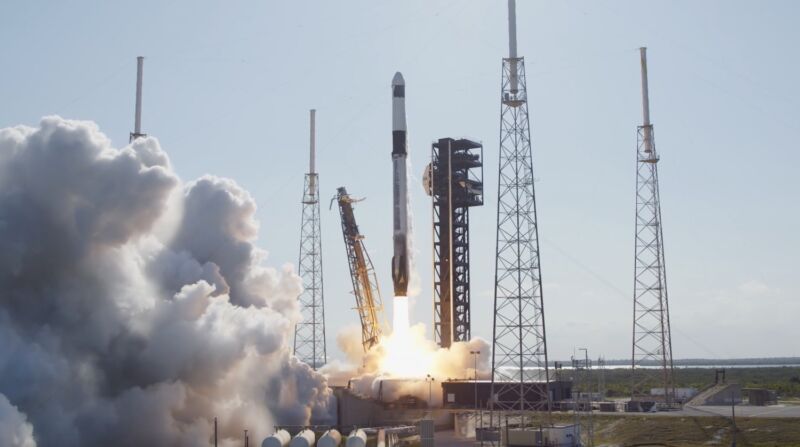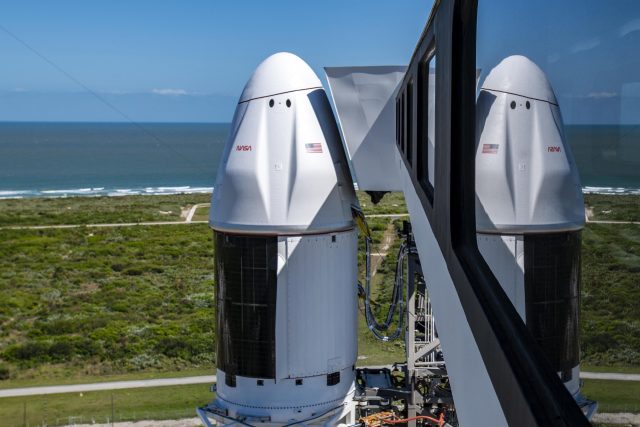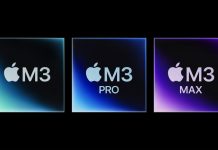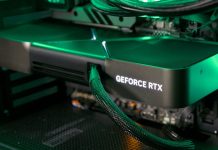“This system will help us scale to bigger towers and spaceships.”

Upgrades at SpaceX’s most-used launch pad in Florida got a trial run Thursday with the liftoff of a Falcon 9 rocket with a Dragon cargo ship heading for the International Space Station.
SpaceX’s Cargo Dragon spacecraft launched at 4:55 pm EDT (20:55 UTC) Thursday from Space Launch Complex 40 (SLC-40) at Cape Canaveral Space Force Station in Florida. This mission, known as CRS-30, is SpaceX’s 30th resupply mission to the space station since 2012.
The automated Dragon supply ship took off on top of a Falcon 9 rocket, heading for a monthlong stay at the International Space Station, where it will deliver more than 6,000 pounds of hardware, fresh food, and experiments for the lab’s seven-person crew.
In the last few months, SpaceX has outfitted the launch pad with the equipment necessary to support launches of human spaceflight missions on the Crew Dragon spacecraft. The Cargo Dragon capsule is the same size and shape as SpaceX’s Crew Dragon, but it’s filled with cargo racks and storage platforms rather than seats and cockpit displays.
This week, SpaceX technicians used the newly installed launch tower and crew access arm at SLC-40 to load time-sensitive experiments and supplies into the Cargo Dragon capsule atop the Falcon 9 rocket.
“CRS-30 will be our first Dragon to launch from Pad 40 since we put that brand-new crew tower in place,” said Sarah Walker, SpaceX’s director of Dragon mission management, in a prelaunch press conference.
Building new capability
Starting last year, construction crews at Cape Canaveral erected segments of a more than 200-foot-tall metal lattice tower at SLC-40, right next to the starting blocks for SpaceX’s Falcon 9 rocket. Before then, SLC-40 was based on a “clean pad” architecture, without any structures to service or access Falcon 9 rockets while they were vertical on the pad.Advertisement
In November, contractors raised the crew access arm to an attach point near the top of the tower. This walkway will allow astronauts to crawl into the Crew Dragon spacecraft during a launch countdown. It also provides access to the hatch on the Cargo Dragon spacecraft for final cargo loading.
Earlier this year, SpaceX tested an escape chute at SLC-40 that would be used in an emergency to help astronauts and ground crews quickly get away from the pad. The chute is similar in function to slide-wire baskets in use for decades at LC-39A, but instead of riding a basket from the top of the tower, personnel escaping a pad emergency would slide down a chute to carry them several hundred feet from the rocket.
SpaceX employees tested the pad escape chute last month at SLC-40. Gwynne Shotwell, SpaceX’s president and chief operating officer, took the ride down the chute. “Astronaut and personnel safety is SpaceX’s highest priority, which is why I had to personally test the new slide,” she posted on X, alongside a wink emoji.
“The team took commercially available off the shelf technology and applied it to the crew tower,” Kiko Dontchev, SpaceX’s vice president of launch, wrote on X. “You are trained on it the same way you are trained on using an emergency exit door on airplane. Only takes a couple of quick physical actions to deploy the slide and anyone can effectively do it.”
As more people travel to space, particularly on larger vehicles like SpaceX’s Starship, simplifying safety systems will be important.
“This system will help us scale to bigger towers and spaceships (think 100 people on Starship),” Dontchev wrote.
SpaceX and its contractors completed all of this work as Falcon 9s fired off SLC-40 every few days with Starlink satellites and other missions.Advertisement
For the last four years, all of SpaceX’s crew and cargo launches to the space station have departed from Launch Complex 39A (LC-39A) at NASA’s Kennedy Space Center, a few miles up the coast from SLC-40. In 2018 and 2019, SpaceX outfitted LC-39A for Cargo Dragon and Crew Dragon missions ahead of the company’s first human spaceflight mission in 2020.

Walker said the new infrastructure added at SLC-40 is “nearly functionally identical” to the equipment for crew missions at LC-39A. The primary differences are the means of pad escape—the chute instead of slide-wire baskets—and a more robust elevator in the tower at SLC-40.
Previously, SpaceX used both SLC-40 and LC-39A for launches of its now-retired first-generation Dragon cargo capsules, which had their final supplies loaded before SpaceX raised the rocket vertical for launch. Like regular satellite launches on Falcon 9s, both pads could support the first-generation Dragon cargo missions.
“Thanks to this new state-of-the-art crew tower required for our human spaceflight missions, that late-load cargo operation got a massive upgrade, too,” Walker said. “It is much easier to load a huge complement of time-critical NASA science into our Dragon spacecraft in the flight orientation.”
SpaceX has drastically ramped up its launch cadence since building LC-39A for Dragon missions. The company plans nearly 150 Falcon 9 or Falcon Heavy launches this year. When you’re flying rockets every two or three days, it’s inevitable two missions will end up vying for the same launch slots. Most recently, that happened in February, when a NASA crew mission was ready to launch from LC-39A around the same time as a narrow launch window for Intuitive Machines’ first commercial lunar lander. Both had to go off of LC-39A.
“Historically, Pad 40 has kind of become our high rate pad,” Walker said. “We’ve gotten the time between launches down to just a couple of days.”
LC-39A has seen less use, primarily for Dragon crew and cargo flights, Falcon Heavy missions, and other “uniquely complex” missions like the Intuitive Machines lander, Walker said.

“We’ve been trying to build up redundant Dragon capability on our two neighboring pads,” Walker said. “It gives us the flexibility that if there’s ever a traffic conflict on 39A and two missions have to launch at the same time, and one of them is a Dragon, now we can move over to SLC-40 and prioritize both of those missions.”
Later this year, SLC-40 could be used for a Crew Dragon launch with astronauts.
“We’re happy to have Pad 40 in place,” said Steve Stich, manager of NASA’s commercial crew program, which oversees a multibillion-dollar contract with SpaceX to ferry astronauts to and from the space station. “It’s great to have a cargo vehicle that’s common (to Crew Dragon) so we can test that pad ahead of time.”
NASA is reviewing SpaceX’s changes at SLC-40 to formally certify the pad for crew missions. Officials want to have SLC-40 available in time for the launch of the next space station crew, Crew-9, scheduled to fly no earlier than August. Even with SLC-40 available, SpaceX and NASA will decide on a launch pad for Crew-9 closer to the launch date.
“It’s good to have that redundancy,” Stich said. “Something could aways happen with the systems at 39A, so we’re really happy to have a backup pad.”
A good problem to have
NASA and SpaceX saw this coming. The launch pad at Kennedy Space Center, formerly home to the Saturn V rocket and the space shuttle, has been the only launch facility capable of handling Dragon crew and cargo missions and also the sole pad designed to accommodate the Falcon Heavy, a popular launcher for NASA science missions and US military satellites.Advertisement
At times, this has led to some gentle tension between SpaceX, NASA, and the Space Force. Historically, it has taken SpaceX about three weeks to reconfigure the ground infrastructure at LC-39A between a Falcon 9 launch and a Falcon Heavy flight.
This is a good problem to have for SpaceX and government officials. In the past, the Pentagon has paid United Launch Alliance, formerly the military’s sole heavy-lift launch provider, billions of dollars to maintain launch pads and other ground facilities in the months or years between missions.
NASA astronaut Matthew Dominick, commander of SpaceX’s Crew-8 mission that launched to the space station earlier this month, had to wait on Earth an extra week earlier this year as the Intuitive Machines lunar launch took priority at LC-39A.
“Could you imagine if I had walked up to you five years ago and said our constraint to launch is launch pad availability?” Dominick said in a prelaunch press conference. “You would have thought I was crazy, but we’re at a cool spot in spaceflight right now. We’ve got rockets competing for launch pads, so you’re not waiting on payloads, you’re not waiting on rockets, you’re waiting on launch pads now.”
Waiting an extra week to launch is not the end of the world, but it’s a problem SpaceX, NASA, and the Space Force would like to avoid. In any case, this isn’t the only motivation for readying SLC-40 for Crew Dragon and Cargo Dragon missions. If an accident or malfunction ever knocks LC-39A offline, SLC-40 is now available to help NASA keep the space station staffed with astronauts.
SpaceX is also looking at basing future flights of the giant Starship rocket from a separate launch mount at LC-39A in Florida. NASA officials have raised concerns that if a Starship exploded at liftoff or landing at LC-39A, it could damage the nearby Falcon 9 and Dragon launch facility.
With SLC-40 now ready for crew launches, there are four launch pads at Cape Canaveral designed to support astronaut flights, alongside crew-rated pads for NASA’s Space Launch System and ULA’s Atlas V rocket. A decade ago, there were none, and during the heyday of NASA’s Apollo and shuttle programs, there were two.
This story was updated to reflect the launch of SpaceX’s CRS-30 mission.




